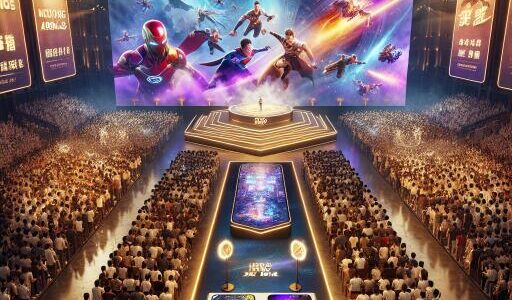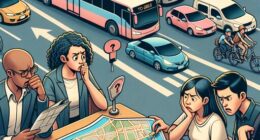Apple Vision Pro: A Gateway to New Realities or a Brain-Changing Phenomenon?
As technology leaps forward with the introduction of devices like the Apple Vision Pro headset, we find ourselves at the cusp of a new era in virtual experiences. This device, alongside its peers from Meta, such as the Quest 3 and Quest Pro, heralds a future where the blend between the digital and physical worlds becomes increasingly seamless. These headsets employ advanced “passthrough” video technology, capturing the real world through sensors and cameras and then representing it digitally, overlaying virtual elements on top of our physical surroundings. The tech community has been abuzz, praising the Apple Vision Pro for its cutting-edge design and interactive features. Nevertheless, it prompts a deeper reflection on the implications of living part of our lives in these constructed realities.
While the allure of such technology is undeniable – offering an environment where the line between what’s real and what’s virtual blurs – there are potential consequences that we must consider. Prolonged exposure to virtual reality (VR) environments could lead to significant alterations in how we perceive the world around us. As these devices encourage longer usage times and deeper immersion, we may be unwittingly participating in a grand-scale experiment on human cognition and perception.
Experts in the field, such as those from Stanford’s Virtual Human Interaction Lab, have highlighted the unprecedented nature of this shift. With companies promoting the use of VR for extended periods daily, we embark on a journey that might reshape our interactions with both the digital and tangible realms. The implications are twofold; not only could this affect individual users’ perception and interaction with their immediate environment, but it might also influence our collective understanding of reality. In a world where experiences are increasingly mediated by digital layers, finding common ground on what constitutes “reality” could become more challenging.
Short-term effects of prolonged VR usage are already well-documented, including altered spatial awareness and depth perception. Users might find it difficult to accurately judge distances, a discrepancy amplified by the digital representation’s inherent limitations compared to the natural capabilities of human vision. This could lead to real-world consequences, ranging from minor misjudgments in personal space to potentially hazardous scenarios, such as the ill-advised attempt to integrate VR with activities like skateboarding or driving. Furthermore, the phenomenon of object distortion within these digital environments points to the limitations of current technology in replicating a seamless and accurate representation of our physical world. As objects can appear warped or inconsistently sized, reliance on these visuals can distort our interaction with the physical environment.
As we stand on the brink of widespread adoption of devices like the Apple Vision Pro, it is crucial to engage in a balanced discourse on the benefits and potential drawbacks. The promise of an immersive and interactive digital layer over our physical existence offers exciting possibilities for entertainment, education, and social connectivity. However, understanding and mitigating the psychological and perceptual impacts of these technologies are imperative to ensure they enhance rather than detract from our reality.
In conclusion, the Apple Vision Pro and similar devices represent a significant leap forward in blending digital and physical worlds. However, as we embrace these new frontiers, we must remain vigilant about the potential changes to our cognitive landscapes, striving to harmonize these advanced digital experiences with our inherent human nature.









